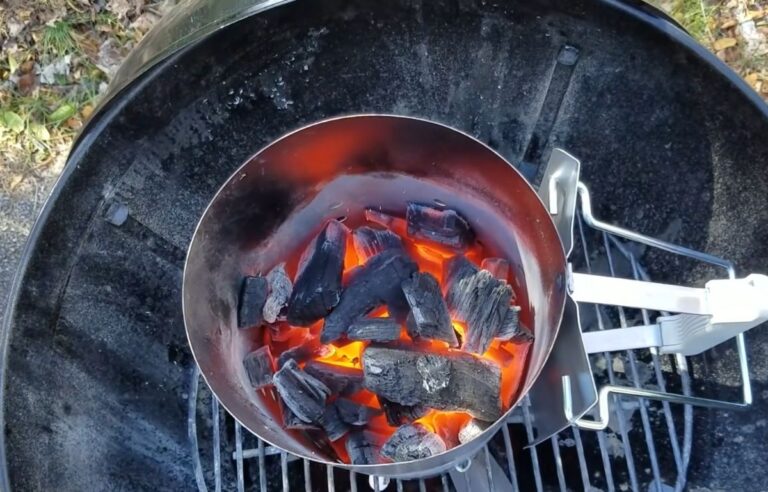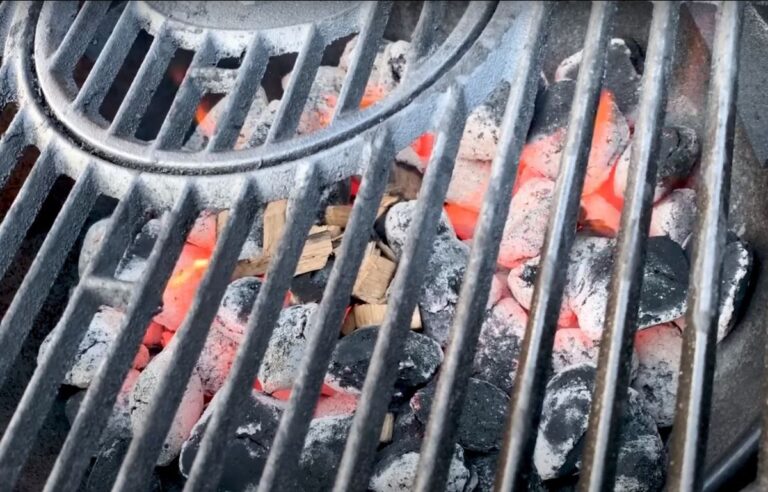Using A Pellet Grill & Prefer More Smoke? Try These Simple Techniques

FaveGrills is reader-supported. If you purchase by clicking a link on this page, we may earn an Affiliate Commission at no extra cost. Learn more
A pellet grill is a popular cooking device, and countless BBQ enthusiasts regularly use it to perform their outdoor cooking tasks on it.
But a common problem all of them share is that such types of grills produce less smoke compared to other traditional options. Therefore, many people ask how to get more smoke flavor from the pellet grill.
To minimize the frustration and maximize the amount of smoky flavor in your grilled and smoked dishes, I’ve brought this valuable guide in which I’ve explored the most effective ways to enhance the amount of smoke from a pellet grill.
Why Do Pellet Grills Produce Less Smoke?
When addressing the issue of why pellet grills produce less smoke, their primary competitors are charcoal and other wood-fired grills and smokers.
So, I will be mainly focusing on the comparison between pellet grills and these traditional options to explain the difference in smoke production.

First of all, it is natural that a traditional smoker or a charcoal grill will produce more smoke flavor than a pellet grill, regardless of the techniques you employ to enhance smokiness.
Secondly, the wood pellet grills have a different design and working technique that allow them to prioritize efficiency and convenience over maximal smoke production.
A charcoal smoker or grill continuously generates smoke as long as the charcoal stays lit. In contrast, pellet grills’ automated operating system feeds pellets into the burn box only when the temperature drops below the set level.
As a result, traditional smokers or charcoal grills always produce a good amount of smoke. But pellet grills will mostly generate smoke when they need to.
Lastly, charcoal is a fuel source that offers more smoke due to the high amount of carbon, whereas pellets tend to burn efficiently, resulting in less smoke.
How to get more smoke flavor from pellet grill? 7 Verified Techniques
So, you now know that a pellet grill produces less smoke and the reasons behind it, but how do you maximize the smokiness then? Here are some different techniques that you can follow to achieve this task.
Keep The Temperature Low And Consistent
Pellet grills have the ability to generate more smoke when the cooking temperature is low.
For example, when you’re smoking brisket at lower temperatures, 225 or 250 degrees Fahrenheit, the slower burn rate of the pellets allows for more smoke production.

Furthermore, if you are cooking a meat cut that requires a slightly higher temperature than 250 °F, I would recommend spending some extra time but keeping the temperature around 250 °F or less for maximum smoke.
Use Different Pellet Flavors Or Mix Two
There are plenty of pellet flavor options available, such as hickory, mesquite, apple, cherry, and more. Interestingly, each one has distinctive flavors and burn times, allowing you to cook with one that suits your cooking desires more.

If I take apple and oak as an example, oak infuses more intense smoke while apple ensures a controlled and mild smoky flavor.
As for the mixing purpose, I suggest combining hickory and cherry for a balanced smoky taste or mesquite and pecan for a robust profile.
Explore The Smoke Settings Feature On Your Pellet Grill
Some popular pellet grills, like Camp Chef Woodwind, come with advanced smoke settings that allow the users to control the intensity of the smoke flavor simply through the control panel.

In simple words, this is how it works. You adjust the settings on the grill’s display to increase or decrease the amount of smoke produced during cooking, but the actual science behind this technology is different.
It gives more satisfactory results when you cook at a lower and constant temperature for a long time. However, when the temperature starts to rise, the grill may produce less smoke.
If you own a Camp Chef model, here’s everything you need to know about its smoke setting.
Prefer Intense Smoke? Stop Wrapping Your Meats

There is a simple rule to follow if you wish to infuse more smoke into your meat cuts: stop wrapping them. The reason is that when you wrap your meat in foil or butcher paper, the paper resists the smoke and acts like a barrier.
On the other hand, leaving your meat unwrapped ensures a continuous flow of smoke penetrates deep inside it, resulting in a more pronounced and satisfying smokiness.
Use A Smoke Tube Or Smoker Box
A smoke tube or smoker box is another outstanding tool that can enhance the smokiness that you get from your grill. Most importantly, it does not only work well with a pellet grill but also with gas and charcoal ones.

A smoker box or smoke tube is a metal-made tool that consists of several holes and is designed to contain wood pellets or chips.
Using them is as simple as placing chips or pellets inside, lighting them, and setting tubes or boxes on the grilling grates. Within a few minutes, it will start producing smoke that will then infuse into your meal.
Prevent Smoke Leakage
When cooking on a pellet grill and aiming for more smoke, ensure that there is no smoke leakage. Usually, low-quality grills lack proper seals and gaskets around their lids, which can lead to smoke escaping before it infuses into your food.
To overcome this problem, either invest in a high-quality pellet grill like Traeger Pro 575 or Z Grills ZPG 7002C or use heat-resistant gaskets or sealants to close gaps and ensure an airtight environment inside the grill.
Keep The Grill’s Lid Close When Cooking
Lastly, when you know that your cooking session is going to be a bit longer, probably 12 hours or even more, you should not repeatedly open the lid to check the food’s status. Instead, monitor the meat’s condition through a digital meat thermometer.
When you open the lid while grilling or smoking, it results in heat and smoke escaping, prolonging the cooking session unnecessarily and disrupting the smoke infusion process.
Top Tip by FaveGrills
If you think that wrapping the meat is necessary then make sure you put some holes on the foil or paper surface. These holes will let the smoke enter the meat and provide a better smoky taste.
Final Thoughts
Pellet grills can’t produce as much smoke as charcoal or traditional smokers. However, you can still get more smoke by experimenting with lower temperatures, using different pellet flavors, and cooking with the right smoke settings.
Additionally, avoid wrapping your meat, prevent smoke leakage, and keep the grill’s lid as close as possible during cooking. These tips and techniques can help you achieve more smoky flavor on your grilled or smoked dishes.
Your Opinion Is Valuable To Us
I believe now you know how you can enhance the smoke profile of your food items cooked through a pellet grill. If there’s still something that I can help you with, fell free to ask or share any information in the comments box.
Frequently Asked Questions
What temp produces the most smoke on the pellet grill?
When you are cooking on a pellet grill, and the temperature is lower, between 225 to 250 degrees Fahrenheit, the smoke production will be better than at a higher temperature.
Which pellets produce the most smoke?
Hickory and Mesquite are two of the best options you’ve got if you want to cook your meat with intense smoke.
Do you soak pellets before smoking?
No, you don’t have to soak pellets before smoking. If you do, they might break apart before even making smoke.







